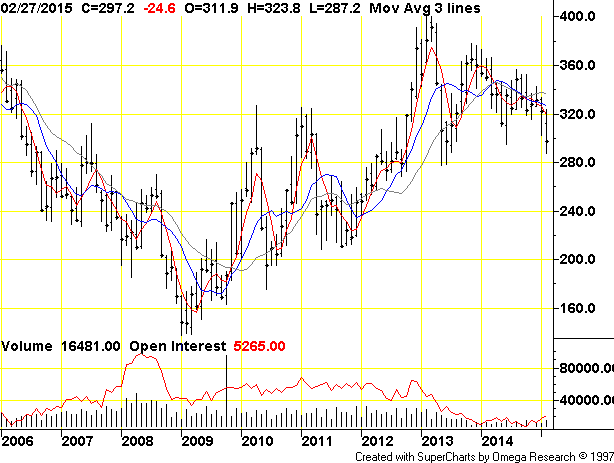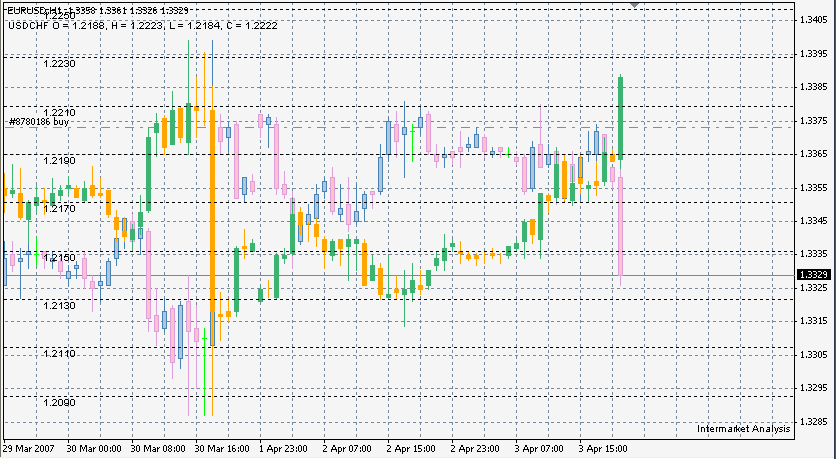Why Technical Trends Are Best on the Foreign Exchange Market
Post on: 25 Май, 2015 No Comment

The foreign exchange market, unlike other markets, is known best for its trendiness. Where stocks tend to trend less and bonds move within a very small margin of error, the foreign exchange market tends to stay in trends for quite some time, picking a direction and sticking with it. There are two reasons for this condition.
Before breaking into the technicalities of the two subsections, it should be important to note that the foreign exchange market is a zero sum market, where for each dollar earned, another from someone else is lost.
Many have debated whether this makes foreign exchange a market of reduced expectations, where spreads in the bid and ask prices push the markets out of the favor of the small investor. While that would be true in a market with zero outside influences, where the spread would actually reduce a retail trader’s opportunities for profit, there are a number of outside influences in the foreign exchange market.
Trade Deals and Capital Flows
Two of the biggest actors in the foreign exchange market are central banks and national governments. Central banks tasked with the duty to maximize economic production and unemployment, while keeping reigns on inflation, slowly leak fresh currency into the markets, alternating the speed at which the money supply increases or decreases in order to influence the performance of the economy.
If you were to observe any US dollar denominated pair, you would find that since 1978, no currency has moved in only one direction against the dollar. Instead, thanks to a move towards globalization, the explosion in international businesses, and central bank and government action, all currencies have tended to bounce from a top to bottom every few years. Some currencies are even quite cyclical, running from top to bottom like clockwork, as demonstrated in the USDCAD pair.
This trending is due partly because of normal economic consequences of expensive or inexpensive currencies among trading partners (Canada and the United States are to each other their biggest trading partner), and also due partly to central bank decisions to raise or lower the value of each currency.
When currency becomes too valuable, one trading partner is effectively priced out of importing anything, while another is able to buy up goods from the other cheaply. This imbalance is eventually worked out, at least temporarily, until the pendulum of the foreign exchange market swings to the other side and the currencies switch roles.

Short Term Speculative Interest
Beside the long term effects of free markets and central bank activity, in the short term, the foreign exchange market tends to trend due to the sheer amount of speculators inside the market. While only a small fraction of the total daily trading volume can be attributed to real exchanges between one currency and another for practical purposes, the remainder, a majority, is pure speculative interest.
Therefore, when the giants of the world need to swap Dollars for Euros, thus causing a run in price, speculative support enters the market to ride the wave up or down. With so much speculative money in the market, momentum in either direction can build quickly. If, for example, half the market is short Euros and half is long Euros, and suddenly half the longs are taken out from a large sell order, suddenly the market shifts and those who were holding long are exposed to losses. Should those who are long then sell their holdings, the price only dives further.
In short, the forex markets maintain their fluidity and trend more than other markets due mostly to their size. With a potential 6.7 billion people participating at any one time through direct speculation, or by purchasing a product manufactured in another country, the sheer amount of volume and market actors make it more fluid, less volatile, and trendier than any other market in the world.














